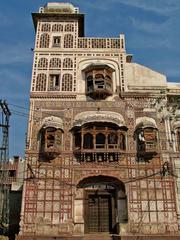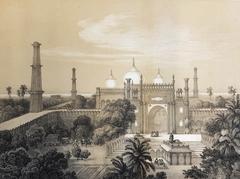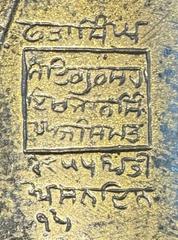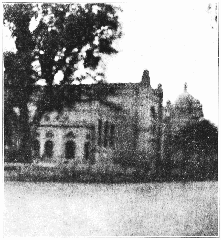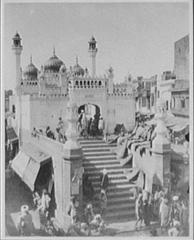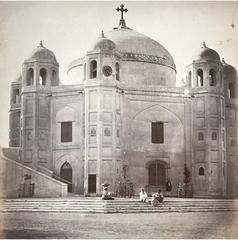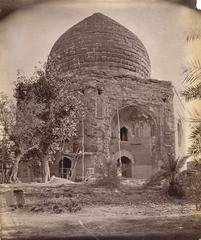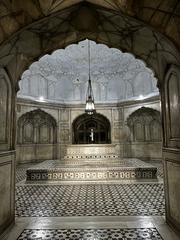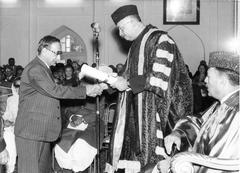Visiting Delhi Gate in Lahore: Hours, Tickets, and Travel Tips
Date: 17/07/2024
Introduction
Delhi Gate (دہلی گیٹ) in Lahore, Pakistan, is a historical gem that stands as a testament to the grandeur of the Mughal era. Constructed during the reign of Emperor Akbar in the 16th century, this gate is one of the thirteen that once fortified the Walled City of Lahore. Named for its orientation towards Delhi, the then capital of the Mughal Empire, Delhi Gate has served as a crucial entry point, facilitating trade and cultural exchange between Lahore and Delhi (Dawn). Over the centuries, the gate has witnessed significant transformations, from its bustling markets and caravanserais during the Mughal period to its adaptation under British colonial rule and post-independence conservation efforts (The Express Tribune). Today, it remains a vibrant part of Lahore’s cultural landscape, drawing visitors with its architectural splendor and historical significance. This guide aims to provide a comprehensive overview of Delhi Gate, offering insights into its history, cultural impact, and practical information for visitors.
Table of Contents
History of دہلی گیٹ (Delhi Gate), Lahore, Pakistan
Origins and Construction
The دہلی گیٹ (Delhi Gate) is one of the thirteen gates of the Walled City of Lahore, Pakistan. It was constructed during the Mughal era, specifically under the reign of Emperor Akbar in the 16th century. The gate was named “Delhi Gate” because it faced the direction of Delhi, the then capital of the Mughal Empire. The architectural style of the gate is a blend of Mughal and Persian influences, characterized by its grand arches and intricate carvings.
Mughal Era Significance
During the Mughal period, the Delhi Gate was not just an entry point but also a symbol of the empire’s grandeur and architectural prowess. The gate was part of a larger fortification system that included massive walls and other gates, designed to protect the city from invasions. The area around the gate was bustling with activity, featuring markets, caravanserais, and residential quarters. The gate itself was adorned with frescoes and calligraphy, showcasing the artistic achievements of the Mughal era.
British Colonial Period
The British colonial period brought significant changes to the Delhi Gate and its surroundings. In the 19th century, the British undertook several restoration projects to preserve the historical and architectural integrity of the gate. However, they also made modifications to suit their administrative needs. The gate became a focal point for colonial administration, and the surrounding area saw the construction of new buildings and infrastructure. The British also introduced modern amenities such as street lighting and sanitation, which altered the traditional landscape of the area.
Post-Independence Era
After the partition of India in 1947, Lahore became part of Pakistan, and the Delhi Gate continued to hold historical and cultural significance. The gate and its surrounding areas have been the focus of various conservation efforts aimed at preserving Lahore’s rich heritage. In recent years, the Walled City of Lahore Authority (WCLA) has undertaken extensive restoration projects to revive the historical and architectural splendor of the Delhi Gate. These efforts have included the restoration of frescoes, structural repairs, and the revitalization of the surrounding markets and streets.
Architectural Features
The Delhi Gate is an architectural marvel, featuring a blend of Mughal and Persian styles. The gate is constructed from red sandstone and bricks, with intricate carvings and frescoes adorning its façade. The main archway is flanked by two smaller arches, each decorated with floral motifs and calligraphy. The gate also features a series of balconies and jharokhas (overhanging enclosed balconies), which were used for surveillance and as vantage points during processions and ceremonies. The interior of the gate is equally impressive, with vaulted ceilings and decorative plasterwork.
Cultural and Social Impact
The Delhi Gate has played a significant role in the cultural and social life of Lahore. Historically, it was a hub of commercial activity, with markets and shops lining the streets leading to the gate. The area around the gate was also a center for social gatherings and public events. Today, the Delhi Gate continues to be a vibrant part of Lahore’s cultural landscape. The surrounding area is home to various cultural and historical landmarks, including the Shahi Hammam (Royal Bath) and the Wazir Khan Mosque, both of which are UNESCO World Heritage Sites.
Preservation and Conservation Efforts
The preservation and conservation of the Delhi Gate have been a priority for both local authorities and international organizations. The Walled City of Lahore Authority (WCLA) has been at the forefront of these efforts, undertaking various projects to restore and maintain the gate and its surroundings. These projects have included structural repairs, the restoration of frescoes and carvings, and the revitalization of the surrounding markets and streets. International organizations such as UNESCO have also provided support and funding for these efforts, recognizing the historical and cultural significance of the Delhi Gate.
Visitor Experience
Visiting the Delhi Gate offers a unique glimpse into Lahore’s rich history and cultural heritage. The gate is easily accessible from various parts of the city, and guided tours are available for those interested in learning more about its history and significance. The surrounding area is home to various markets and shops, offering a range of traditional crafts and souvenirs. Visitors can also explore nearby historical landmarks such as the Shahi Hammam and the Wazir Khan Mosque, both of which are within walking distance of the gate.
Practical Information for Visitors
- Location - The Delhi Gate is located in the Walled City of Lahore, near the intersection of Circular Road and Shahi Guzargah.
- Opening Hours - The gate is open to visitors throughout the day, but it is advisable to visit during daylight hours for safety and convenience.
- Entry Fee - There is no entry fee to visit the Delhi Gate, but guided tours may have associated costs.
- Best Time to Visit - The best time to visit the Delhi Gate is during the cooler months (October to March) to avoid the extreme heat of the summer.
- Nearby Attractions - Visitors can explore nearby attractions such as the Shahi Hammam, Wazir Khan Mosque, and the bustling markets of the Walled City.
Special Events, Guided Tours, and Photographic Spots
The Delhi Gate often serves as a venue for special cultural and historical events, enhancing its role as a living part of Lahore’s heritage. Guided tours are available and highly recommended for first-time visitors. These tours provide in-depth knowledge about the gate’s history and significance. For photography enthusiasts, the gate and its surroundings offer numerous picturesque spots, especially during the early morning or late afternoon when the lighting is most favorable.
Travel Tips and Accessibility
- Travel Tips - Wear comfortable shoes as you will be walking a lot. Carry water and sun protection if visiting during the warmer months. Respect the local customs and dress modestly.
- Accessibility - The Delhi Gate area is somewhat accessible for visitors with mobility issues, but the cobbled streets and uneven surfaces may pose challenges. It is advisable to check with tour operators for the best accessible routes.
FAQ
- What are the visiting hours for Delhi Gate?
- The gate is open to visitors throughout the day, but it is advisable to visit during daylight hours for safety and convenience.
- Is there an entry fee for Delhi Gate?
- There is no entry fee to visit the Delhi Gate, but guided tours may have associated costs.
- What is the best time to visit Delhi Gate?
- The best time to visit is during the cooler months (October to March) to avoid the extreme heat of the summer.
For more information on the history and significance of the Delhi Gate, you can visit the Walled City of Lahore Authority’s official website.
Stay Up to Date
Download the Audiala app to get the latest updates on historical sites in Lahore and other cultural attractions. Check out related posts on our website, and follow us on social media for more updates.
Conclusion
Delhi Gate is not merely an architectural marvel but a living monument that encapsulates Lahore’s rich historical tapestry. From its origins in the Mughal era to its enduring significance in contemporary times, the gate has weathered the sands of time and various regimes, each leaving its indelible mark. The concerted preservation efforts by local authorities and international bodies, such as the Walled City of Lahore Authority (WCLA) and UNESCO, ensure that Delhi Gate continues to be a focal point of Lahore’s heritage (UNESCO). For visitors, a trip to Delhi Gate offers more than just a glimpse into the past; it is an immersive experience that combines historical exploration with cultural enrichment. Whether you are wandering through the bustling markets or admiring the intricate Mughal and Persian architectural features, Delhi Gate provides a unique and enriching journey through time. As you plan your visit, this guide aims to equip you with all the necessary information to make the most of your exploration of this iconic landmark.
References
- Dawn, 2018, ‘The legacy of Lahore’s Delhi Gate,’ Dawn
- The Express Tribune, 2020, ‘The legacy of Lahore’s Delhi Gate,’ The Express Tribune
- UNESCO, 2021, ‘Walled City of Lahore,’ UNESCO
